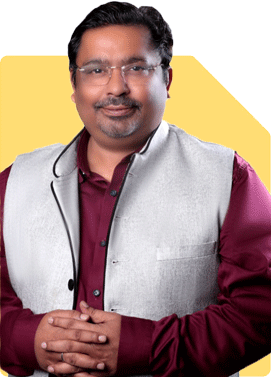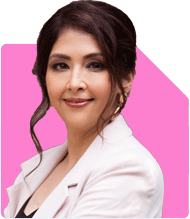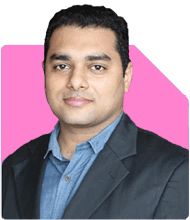Ramalingam Kalirajan |10881 Answers |Ask -Follow
Mutual Funds, Financial Planning Expert - Answered on May 26, 2024
He has an MBA in finance from the University of Madras and is a certified financial planner.
He is the director and chief financial planner at Holistic Investment, a Chennai-based firm that offers financial planning and wealth management advice.... more

Hi, I am 36 years old, married & have 1 child (3 year old). Me & wife have combined income from salary of 3.75 lakh post taxes. We are investing in following funds & have investment horizon of more than 15 years. Aditya BSL Pure Value - 2k DSP Value Fund - 4k HDFC Small Cap - 2K Kotak business cycle - 5k Kotak Emerging Equity fund - 2K Motilal Oswal large and Midcap - 10k Bandhan Core Equity - 2k Baroda BNP India Consumption - 3k Franklin India Prima - 4k HDFC Mid Cap Opportunity - 2k HSBC Small Cap - 5k Nippon India Flexi Cap - 7.5 SBI small cap - 4k White Oak capital Large and Mid - 7.5k ICICI prudential India opportunity -10k NPS - 15K Equity Market - 25K SGB - 15K LIC -10K. I'm looking for the same investment till next 15 years. Definitely will increase the MF amount every year. I'm looking for at least 15+ Cr corpus at the age of 55. Please guide me with the existing investment.
Current Portfolio Analysis
1. Diverse Mutual Fund Investments
You have a well-diversified portfolio across various mutual funds, including large cap, mid cap, small cap, value, and thematic funds. This diversification helps mitigate risk and capture growth across different market segments.
2. Monthly SIP Amount
Your current SIPs in mutual funds amount to Rs. 71,000 per month. This disciplined approach to investing through SIPs ensures regular contributions and benefits from rupee cost averaging.
3. Additional Investments
Besides mutual funds, you also invest in NPS (Rs. 15,000), equity market (Rs. 25,000), Sovereign Gold Bonds (SGB - Rs. 15,000), and LIC (Rs. 10,000). These investments provide further diversification and stability to your portfolio.
Evaluating Your Investment Strategy
1. Investment Horizon
With an investment horizon of over 15 years, you have the advantage of time on your side. Long-term investments in equity mutual funds can help you achieve significant capital appreciation.
2. Portfolio Diversification
Your portfolio includes a mix of large, mid, and small cap funds, as well as value and thematic funds. This diversification is essential to spread risk and capture growth across various sectors and market caps.
3. Regular Increment in SIP Amounts
You plan to increase your SIP amounts every year, which is a wise strategy. This helps in maintaining the purchasing power of your investments and accelerates the growth of your corpus.
Recommendations for Optimization
1. Focus on Quality Funds
While your portfolio is well-diversified, it's essential to focus on quality funds with a consistent track record. Regularly review the performance of your funds and replace underperformers with better alternatives.
2. Reduce Overlapping
Some of your funds may have overlapping investments in similar stocks. Reducing overlapping can enhance the efficiency of your portfolio. For example, having too many small cap funds can lead to redundancy.
3. Maintain Asset Allocation
Regularly rebalance your portfolio to maintain the desired asset allocation. This ensures that your investment strategy remains aligned with your risk tolerance and financial goals.
Projected Growth and Corpus Calculation
1. Expected Returns
Assuming an average annual return of 12% from your equity mutual funds, you can project the growth of your investments over the next 15 years. Historical data suggests that well-diversified equity portfolios can achieve such returns over the long term.
2. Increasing SIP Contributions
Increasing your SIP contributions by 10% annually can significantly boost your corpus. This strategy takes advantage of compounding and helps in accumulating a larger corpus.
3. Additional Contributions
Your investments in NPS, equity market, SGB, and LIC also contribute to your overall corpus. Ensure these investments are aligned with your risk tolerance and financial goals.
Example Calculation
Let's consider a simplified example to project your corpus:
Initial Monthly SIP: Rs. 71,000
Annual Increase in SIP: 10%
Annual Return on Mutual Funds: 12%
Over 15 years, this strategy can help you accumulate a significant corpus. Please note that actual returns can vary, and it's essential to review and adjust your strategy regularly.
Importance of Consulting a Certified Financial Planner
1. Personalized Advice
A Certified Financial Planner (CFP) provides personalized advice based on your financial situation, goals, and risk tolerance. They help you make informed decisions tailored to your needs.
2. Expert Management
A CFP continuously monitors your investments and market conditions. They make necessary adjustments to your portfolio, ensuring it remains on track to achieve your financial objectives.
3. Risk Management
A CFP employs strategies to manage risk and optimize returns. Their expertise helps in navigating market volatility and safeguarding your investments.
Conclusion
Your disciplined investment approach, diversified portfolio, and long-term horizon put you on a strong path toward achieving your goal of accumulating Rs. 15 crores. By focusing on quality funds, reducing overlap, and maintaining a balanced asset allocation, you can optimize your investment strategy.
Regularly consulting with a Certified Financial Planner (CFP) will provide you with personalized advice and expert management to keep your investments on track. Your commitment to increasing your SIP contributions annually further enhances your potential to achieve your financial goals.
Best Regards,
K. Ramalingam, MBA, CFP
Chief Financial Planner,
www.holisticinvestment.in
You may like to see similar questions and answers below
Omkeshwar Singh | Answer |Ask -Follow
Head, Rank MF - Answered on Apr 07, 2022
Nikunj Saraf | Answer |Ask -Follow
Mutual Funds Expert - Answered on Nov 14, 2022
Ramalingam Kalirajan |10881 Answers |Ask -Follow
Mutual Funds, Financial Planning Expert - Answered on May 09, 2024
Milind Vadjikar | Answer |Ask -Follow
Insurance, Stocks, MF, PF Expert - Answered on Oct 20, 2024
Ramalingam Kalirajan |10881 Answers |Ask -Follow
Mutual Funds, Financial Planning Expert - Answered on Nov 21, 2024
Kanchan Rai |646 Answers |Ask -Follow
Relationships Expert, Mind Coach - Answered on Dec 12, 2025
Ravi Mittal |677 Answers |Ask -Follow
Dating, Relationships Expert - Answered on Dec 12, 2025
Ramalingam Kalirajan |10881 Answers |Ask -Follow
Mutual Funds, Financial Planning Expert - Answered on Dec 12, 2025
Ramalingam Kalirajan |10881 Answers |Ask -Follow
Mutual Funds, Financial Planning Expert - Answered on Dec 12, 2025
Reetika Sharma |423 Answers |Ask -Follow
Financial Planner, MF and Insurance Expert - Answered on Dec 12, 2025
Reetika Sharma |423 Answers |Ask -Follow
Financial Planner, MF and Insurance Expert - Answered on Dec 12, 2025
Reetika Sharma |423 Answers |Ask -Follow
Financial Planner, MF and Insurance Expert - Answered on Dec 12, 2025
Reetika Sharma |423 Answers |Ask -Follow
Financial Planner, MF and Insurance Expert - Answered on Dec 12, 2025
Reetika Sharma |423 Answers |Ask -Follow
Financial Planner, MF and Insurance Expert - Answered on Dec 12, 2025
Mayank Chandel |2572 Answers |Ask -Follow
IIT-JEE, NEET-UG, SAT, CLAT, CA, CS Exam Expert - Answered on Dec 11, 2025





























